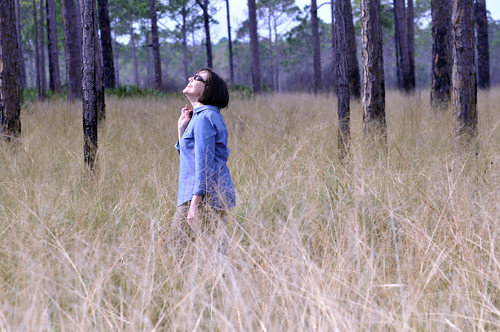
The Archbold Biological Station located in central Florida occupies 5,200 acres of pristine Florida scrub habitat on the southern tip of the Lake Wales Ridge, which is considered an ecological wonder. Eastern indigo snakes, Florida sand skinks, Florida scrub jays, burrowing owls and crested caracaras occupy the mosaic of uplands and wetlands found within the confluence of the Kissimmee River and Fisheating Creek watershed.
This renowned research facility has hosted scientists from all over the world for almost 75 years, and its scientific publications document the status and habits of plants and animals that are found nowhere else on earth.
So, a chance to add 3,648 adjacent acres of pastureland to protect and restore natural resources was an opportunity Archbold couldn’t pass up in 2002. At the same time, it would present new avenues for research balancing ecological restoration with sustainable agriculture use.
To accomplish these goals, Archbold entered more than a third of the reserve into four easements through USDA’s Natural Resources Conservation Service (NRCS). The agency’s easement programs provide financial and technical assistance toward restoring previously drained wetlands and can keep enrolled land from being developed.
“Our research programs have expanded in recent years to restoration ecology and agro-ecology because of the importance of ranch lands and agricultural lands for conserving so many species in the Northern Everglades watershed,” said Betsie Rothermel, the station’s research program director for restoration ecology, who has worked on the reserve since 2008.
During the last four years, NRCS has started work on three of the four easements: Mary’s Creek, Frances Creek and Cutthroat Seep.
Restoring hydrology is a long-term process that can be labor intensive. According to Rothermel, restoration isn’t a matter of blocking a few ditches that were previously used to drain the wetlands and convert the area into pastureland or expecting the instant return of a natural functioning community like the one that used to exist. The groundwater seepage that fed these areas was intercepted by extensive ditching and conversion to pasture in the 1970s.

In Cutthroat Seep, it took two years of careful planning by engineers and biologists and then construction to make the area wetter. Construction included removing ditches and building water control structures to hold the water on the site. This may be one of the first attempts to restore the hydrology and native cutthroat grass communities that are unique to the slopes of the Lake Wales Ridge.
As part of hydrological restoration in 2012, workers blocked or filled most of the ditches. Financial assistance from the NRCS conservation easements helped fund the work. NRCS engineers assisted with the designs and will provide technical assistance to guide long-term management.
Now that the water levels are back, it is a matter of controlling invasive plants, using prescribed burning to keep woody species from encroaching, planting natives and waiting.
“We help NRCS by monitoring the groundwater levels and sampling vegetation communities following restoration,” she said.
Even with monthly visits over the last four years to evaluate the treated sites, it may take 10 or more years to start seeing the desired changes, especially with Florida’s wildly varying weather patterns.
“Restoration is an adaptive process, ‘try this and see if it works,’” she said. The goal is a self-sustaining system and a map for restoring degraded wetlands on other landscapes.
“So much wetland habitat has been lost. To me personally, success is seeing the cascading effects of restoration and how it plays out to provide more habitats for wildlife, from insects to frogs to birds,” Rothermel said.
This is especially critical in the Lake Wales Ridge area, which has such a high concentration of imperiled plants and animals. The restoration sites on Archbold, along with conservation easements on private ranchlands in the upper Fisheating Creek watershed total almost 40,000 acres.
Restoring wetlands on these sites and managing grazing according to best management practices will help reduce nutrients that are polluting Lake Okeechobee and the North Everglades, since everything draining from the central part of the state affects the water quality and quantity flowing into Lake Okeechobee and ultimately the Everglades.

